*NURSING > QUESTIONS & ANSWERS > NURSING 274 Kaplan test GI questions and Answers | Already Graded A | Best exam performance 100% (All)
NURSING 274 Kaplan test GI questions and Answers | Already Graded A | Best exam performance 100%
Document Content and Description Below
NURSING 274 Kaplan test GI questions and Answers Kaplan test GI questions The nurse is developing a comprehensive care plan for a young woman with an eating disorder. The nurse refers this cli... ent to assertiveness skills classes. The nurse knows that this is an appropriate intervention because this client may have problems with 1. aggressive behaviors and angry feelings. 2. self-identity and self-esteem. 3. focusing on reality. 4. family boundary intrusions. 9. Under the supervision of the registered nurse, a student nurse is changing the dressing of a 49-yearold woman with a newly inserted peritoneal dialysis catheter. Which of the following activities, if performed by the student nurse after removal of the old dressing, would require an intervention by the registered nurse? 1. The student nurse cleans the catheter insertion site using a sterile cotton swab soaked in povidone-iodine. 2. The student nurse applies two sterile precut 4x4s to the catheter insertion site. 3. The student nurse cleans the insertion site using a circular motion from the outer abdomen toward the insertion site. 4. The student nurse securely tapes the edges of the sterile dressing with paper tape. A Miller-Abbott tube is ordered for a client. The nurse knows that the main reason this tube is inserted is to 1. provide an avenue for nutrients to flow past an obstructed area. 2. prevent fluid and gas accumulation in the stomach. 3. administer drugs that can be absorbed directly from the intestinal mucosa. 4. remove fluid and gas from the small intestine. Promethazine hydrochloride (Phenergan) 25 mg IV push has been ordered for a patient. Before administering this medication to the patient, the nurse should check the 1. color of the medication solution. 2. patient’s pulse and temperature. 3. time of the last analgesic dose the patient received. 4. patency of the patient’s vein. The physician prescribes estrogen (Premarin) 0.625 mg daily for a 43-year-old woman. The nurse knows which of the following symptoms is a common initial side effect of this medication? 1. Nausea. 2. Visual disturbances. 3. Tinnitus. 4. Ataxia. 37. The nurse is assessing a client immediately after an exploratory laparotomy. Which of the following nursing observations would relate to the complication of intestinal obstruction? 1. Protruding soft abdomen with frequent diarrhea. 2. Distended abdomen with ascites. 3. Minimal bowel sounds in all four quadrants. 4. Distended abdomen with complaints of pain. A 69-year-old woman has been receiving total parenteral nutrition (TPN) for several weeks. If the TPN were abruptly discontinued, the nurse would expect the patient to exhibit 1. tinnitus, vertigo, blurred vision. 2. 2. fever, malaise, anorexia. 3. 3. diaphoresis, confusion, tachycardia. 4. 4. hyperpnea, flushed face, diarrhea. The nurse should anticipate the client with a gastric ulcer to have pain 1. two to three hours after a meal. 2. at night. 3. relieved by ingestion of food. 4. one-half to one hour after a meal A client is admitted to the outpatient oncology unit for his routine chemotherapy transfusion. The client’s current lab report is WBC 2,500 mm3, RBC 5.1 ml/mm3, and calcium 5 mEq/L. Based on these assessments, which of the following should be the priority nursing diagnosis? 1. Risk for activity intolerance related to decrease in red cells. 2. Risk for infection related to low white cell count. 3. Risk for anxiety; secondary to hypoparathyroid disease. 4. Risk for fluid volume deficit due to decreased fluid intake The nurse is preparing a client for a magnetic resonance imaging (MRI). Which of the following client statements indicates to the nurse that teaching has been successful? 1. “The dye used in the test will turn my urine green for about 24 hours.” 2. “I will be put to sleep for this procedure. I will return to my room in two hours.” 3. “This procedure will take about 90 minutes to complete. There will be no discomfort.” 4. “The wires that will be attached to my head and chest will not cause me any pain.” 61. A fluid challenge of 250 cc of normal saline infused over 15 min is ordered for a client with possible acute renal failure. The nurse understands that the fluid challenge is given to 1. rule out dehydration as the cause of oliguria. 2. increase cardiac output and fluid volume. 3. promote the transfer of intravascular fluid to the intracellular space. 4. dilute the level of waste products in the intravascular fluid. A client has developed a low intestinal obstruction. The nurse would anticipate which of the following findings? 1. Nausea, vomiting, abdominal distention. 2. Explosive, irritating diarrhea. 3. Abdominal tenderness with rectal bleeding. 4. Midepigastric discomfort, tarry stool. A 42-year-old man with metastatic lung cancer is admitted to the hospital. His orders include: do not resuscitate (DNR) and morphine 2 mg/h by continuous IV infusion. When the nurse assesses him, his BP is 86/50, respirations are 8, and he is nonresponsive. Naloxone hydrochloride (Narcan), 0.4 mg IV, is ordered STAT. In planning care for this man, it is IMPORTANT for the nurse to know that 1. the BP and respirations will need to increase before a second dose of Narcan can be given. 2. Narcan should not be given to the man because of his DNR status. 3. a dose of Narcan may need to be repeated in 2-3 minutes. 4. Narcan is effective in treating respiratory changes caused by opiates, barbiturates, and sedatives A 65-year-old man is scheduled for a colon resection this morning. Last night he had polyethylene glycolelectrolyte solution (GoLytely) and a soapsuds enema. This morning he passes a medium amount of soft, brown stool. The nurse should know that this 1. indicates that the bowel preparation is incomplete. 2. is evidence that the patient ate something after midnight. 3. is an expected finding before this type of surgery. 4. is the last stool that was left in the colon. The nurse is supervising an LPN/LVN who is administering an enema to a patient. During the administration, it is MOST important for the LPN/LVN to take which of the following actions? 1. Place the solution 20 inches above the anus. 2. Adjust the temperature of the solution. 3. Insert the tube six inches. 4. Position the patient lef t side-lying (Sim’s) with knee flexed. The nurse understands that the primary reason elderly adults have problems with constipation is that they 1. eat a small volume of food with decreased bulk. 2. have less activity and decreased muscle tone. 3. have neurological changes in the gastrointestinal tract. 4. have decreased sensation in the gastrointestinal tract. . The nurse suggests that the client not eat or drink anything just before going to bed. The appropriateness of this comment is based on which of these understandings about a sliding hiatal hernia? 1. The client is less likely to awaken during the night with heartburn if the stomach is empty. 2. Early morning vomiting will be less of a problem if the stomach is empty. 3. Drinking or eating before lying down causes decreased respirations due to increased pressure on the lungs. 4. The client may develop fluid overload if fluids are taken just before going to bed. The nurse understands that the primary reason elderly adults have problems with constipation is that they 1. eat a small volume of food with decreased bulk. 2. have less activity and decreased muscle tone. 3. have neurological changes in the gastrointestinal tract. 4. have decreased sensation in the gastrointestinal tract. Which information should the nurse recognize as being the MOST pertinent to the diagnosis of cholecystitis? 1. Flatulence. 2. Nausea and vomiting. 3. Right upper abdominal pain. 4. Dyspepsia. A client had a kidney transplant yesterday. The client’s son has come to visit. The nurse should instruct the son to do which of the following? 1. No special isolation techniques are necessary. 2. Wear a double mask and gloves. 3. Perform good hand washing. 4. Wear a gown and a mask. In planning diet teaching for a child in the early stages of nephrotic syndrome, the nurse should discuss with the parents which of the following dietary changes? 1. Adequate protein intake, low sodium. 2. Low-protein, low-potassium intake. 3. Low-potassium, low-calorie intake. 4. Limited-protein, high-carbohydrate intake. . In preparing a teaching plan regarding colostomy irrigations, the nurse should include which of the following? 1. The colostomy needs to be irrigated at the same time every day. 2. Irrigate the colostomy after meals to increase peristalsis. 3. Insert the catheter about 10 inches into the stoma. 4. The solution should be very warm to increase dilation and flow. . The physician orders naproxen sodium (Naprosyn) for a 77-year-old man. The nurse should assess the patient for 1. stomatitis and photosensitivity. 2. brachycardia and dry mouth. 3. fluid retention and dizziness. 4. gynecomastia and impotence. A client has a total laryngectomy with a permanent tracheostomy. The nurse is planning nutritional intake for the next three days. Which of the following would be necessary for the nurse to consider regarding the client’s nutrition? 1. To facilitate healing of the surgical area, a nasogastric tube may be utilized and tube feedings may be implemented. 2. The client will be unable to maintain any PO intake as long as he has a tracheotomy in place. 3. Nutritional and/or gastric feedings will not be attempted for approximately three weeks to decrease the incidence of aspiration. 4. Since the client is dependent on the ventilator, nutritional intake will be delayed. The nurse checks for placement of a nasogastric (NG) tube before beginning a tube feeding for a client. Which of the following results would indicate to the nurse that the tube feeding can begin? 1. A small amount of white mucus is aspirated from the NG tube. 2. The pH of the contents removed from the NG tube is 3. 3. No bubbles are seen when the nurse inverts the NG tube in water. 4. The client says he can feel the NG tube in the back of his throat A male client is admitted with urinary tract problems. A prostate-specific antigen (PSA) and acid phosphatase test are to be done. The nurse knows that 1. these tests are valuable screening tests for prostatic cancer. 2. the level of PSA is decreased in clients with renal stones. 3. the test reflects the level of renal involvement in acid-base problems. 4. the level of PSA is elevated in clients in early stage renal failure The nurse is caring for clients in the medical clinic. A nursing assessment of a client with a hiatal hernia is MOST likely to reveal 1. a bulge in the lower right quadrant. 2. pain at the umbilicus radiating down into the groin. 3. a burning sensation in the midepigastric area each day before lunch. 4. complaints of awakening at night with heartburn. A client is admitted with irritable bowel syndrome. The nurse would anticipate the client’s history to reflect which of the following? 1. Pattern of alternating diarrhea and constipation. 2. Chronic diarrhea stools occurring 10-12 times per day. 3. Diarrhea and vomiting with severe abdominal distention. 4. Bloody stools with increased cramping after eating [Show More]
Last updated: 1 year ago
Preview 1 out of 7 pages
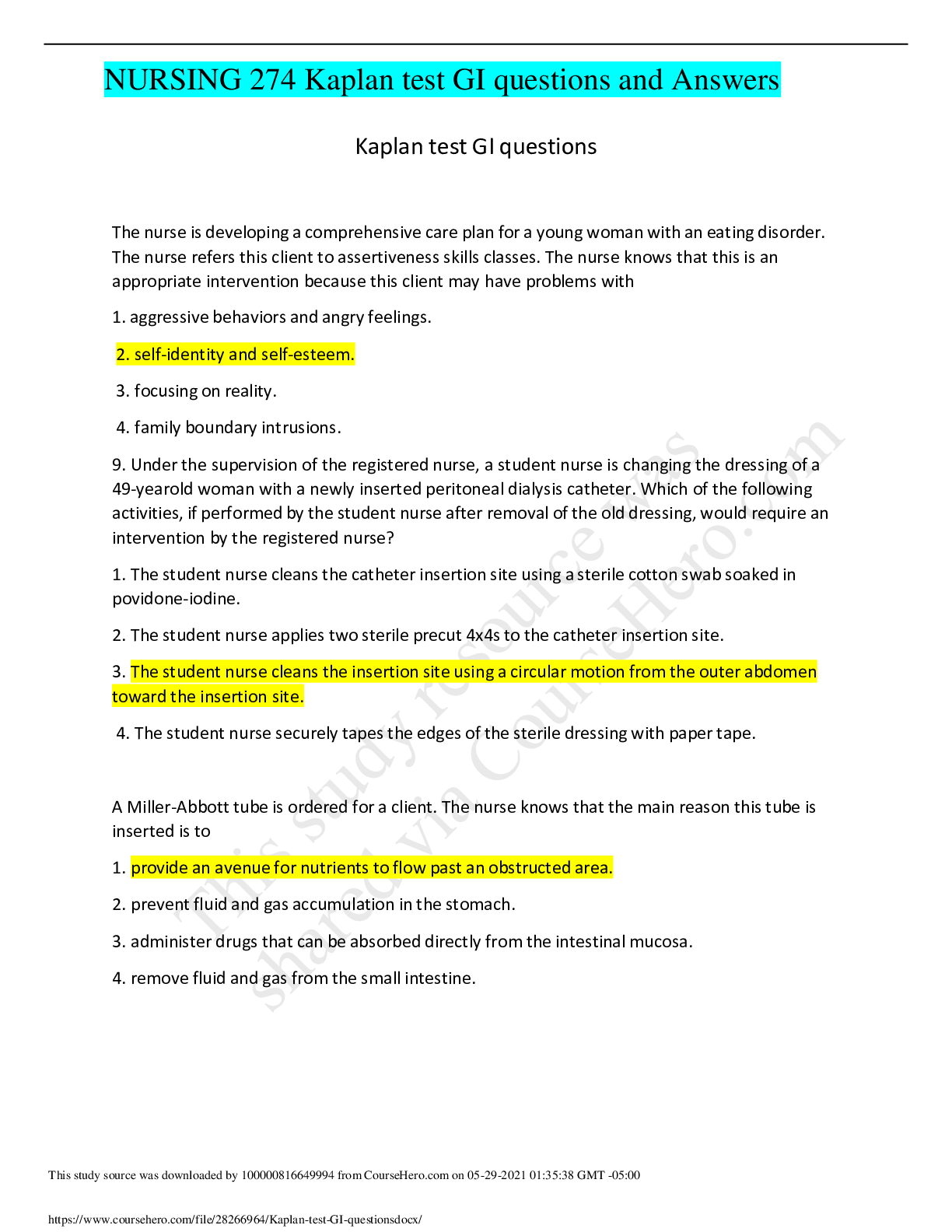
Reviews( 0 )
Document information
Connected school, study & course
About the document
Uploaded On
May 29, 2021
Number of pages
7
Written in
Additional information
This document has been written for:
Uploaded
May 29, 2021
Downloads
0
Views
36


 And LETRS Unit 8 Final Assessment Test.png)
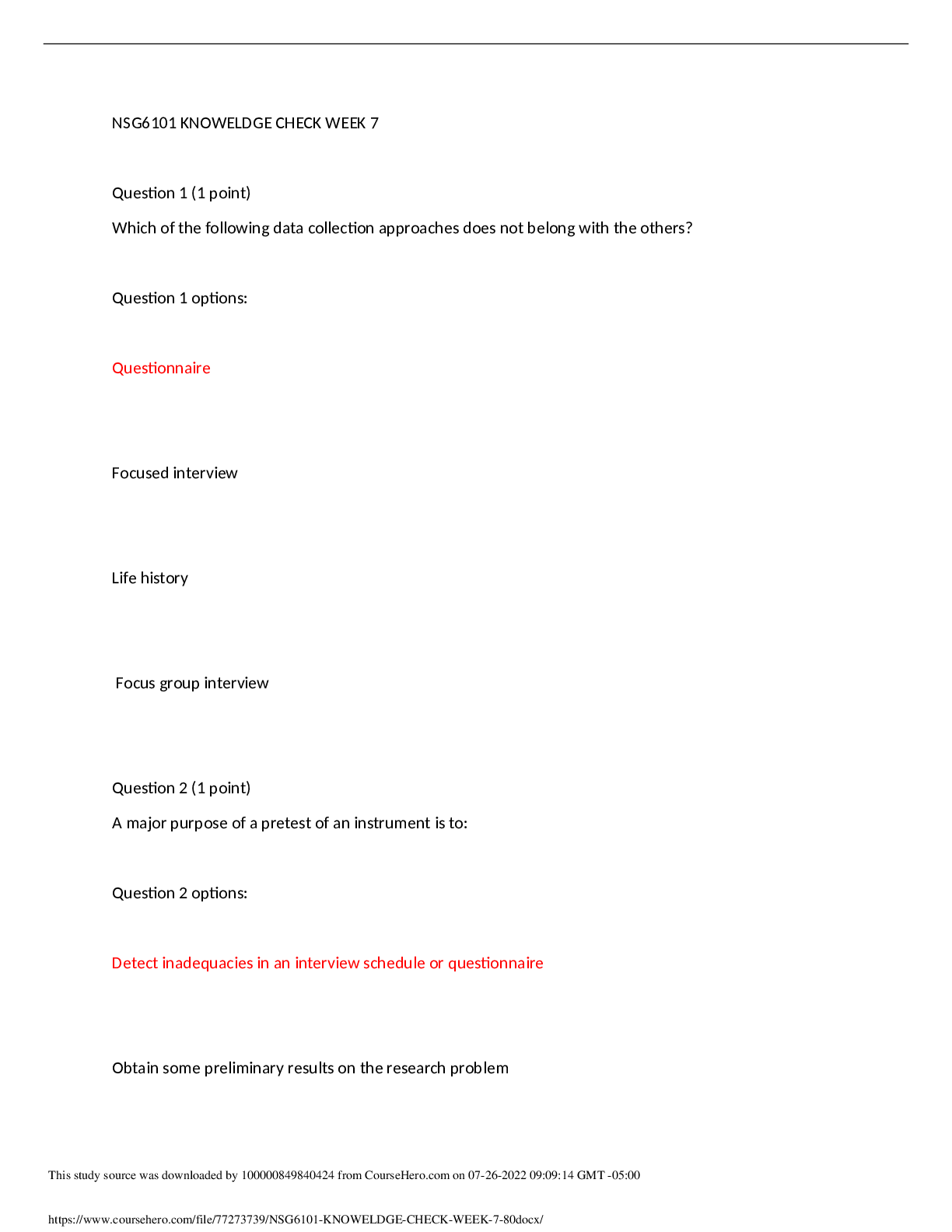
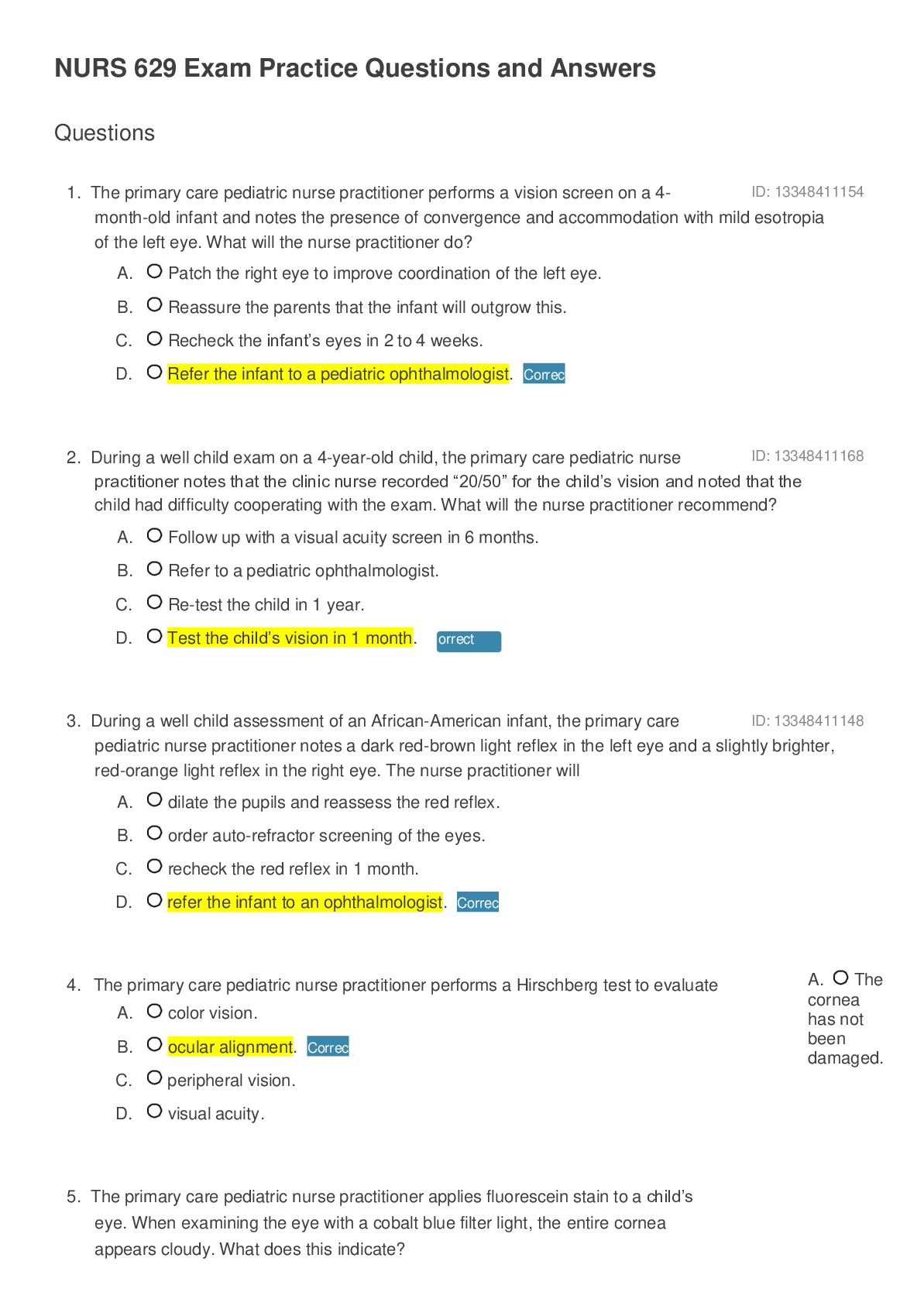
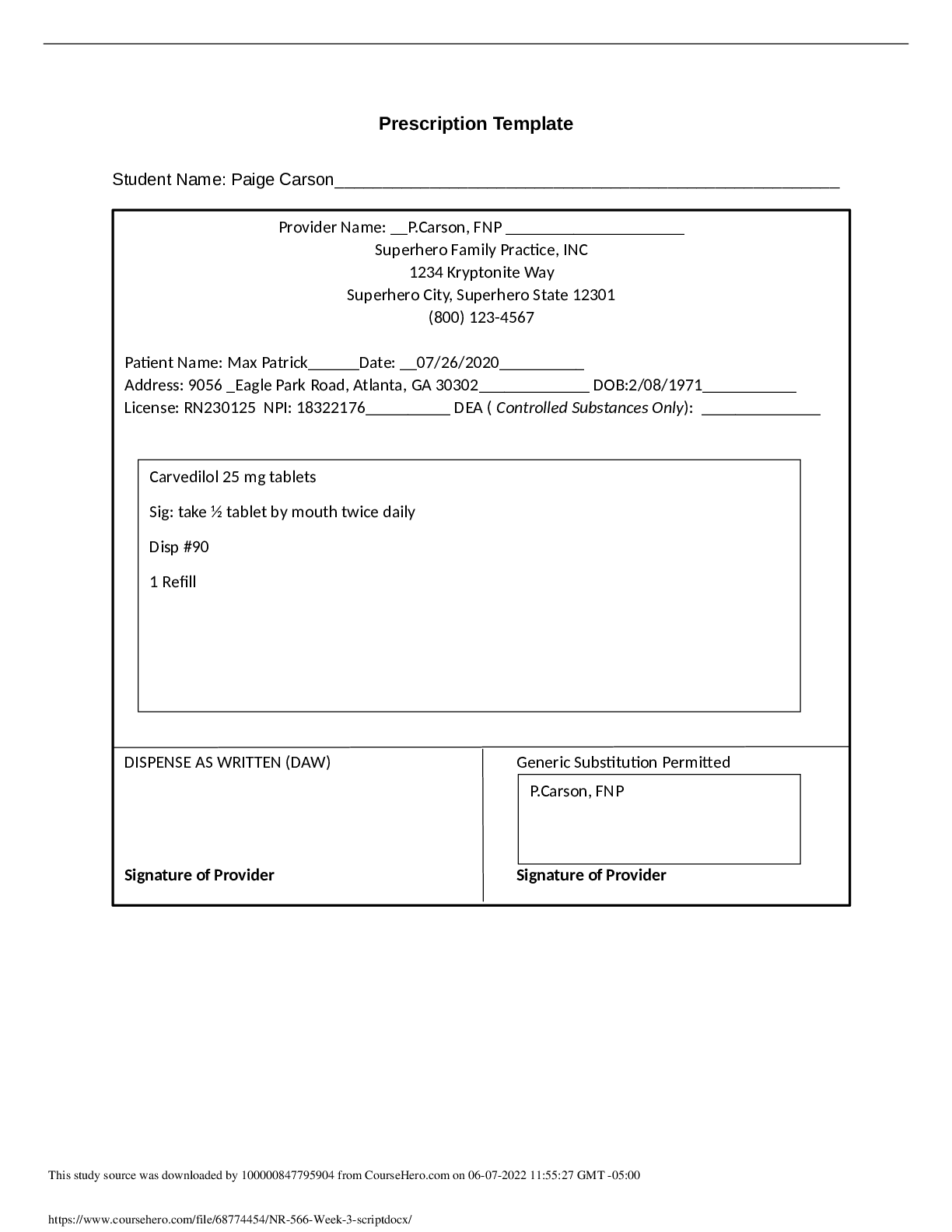
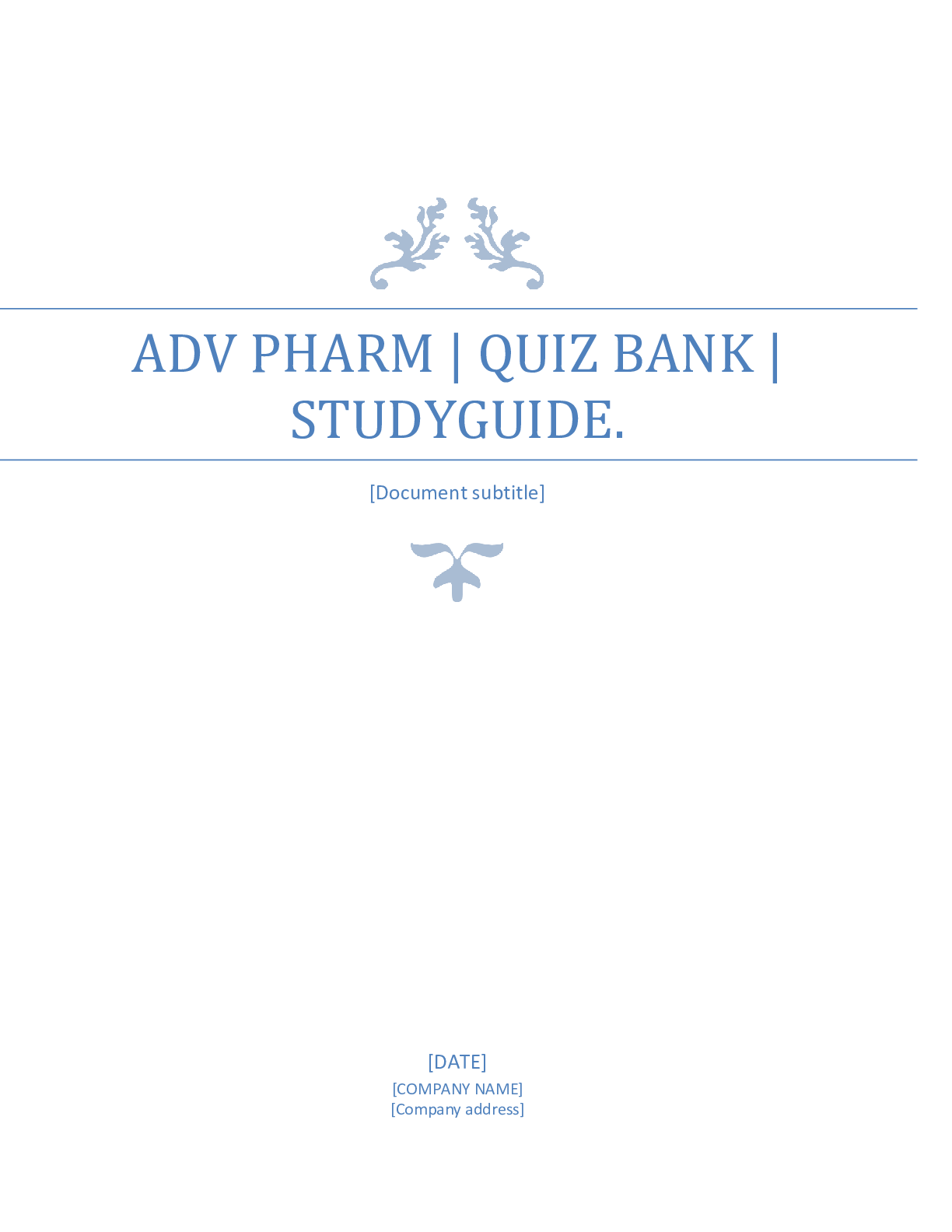
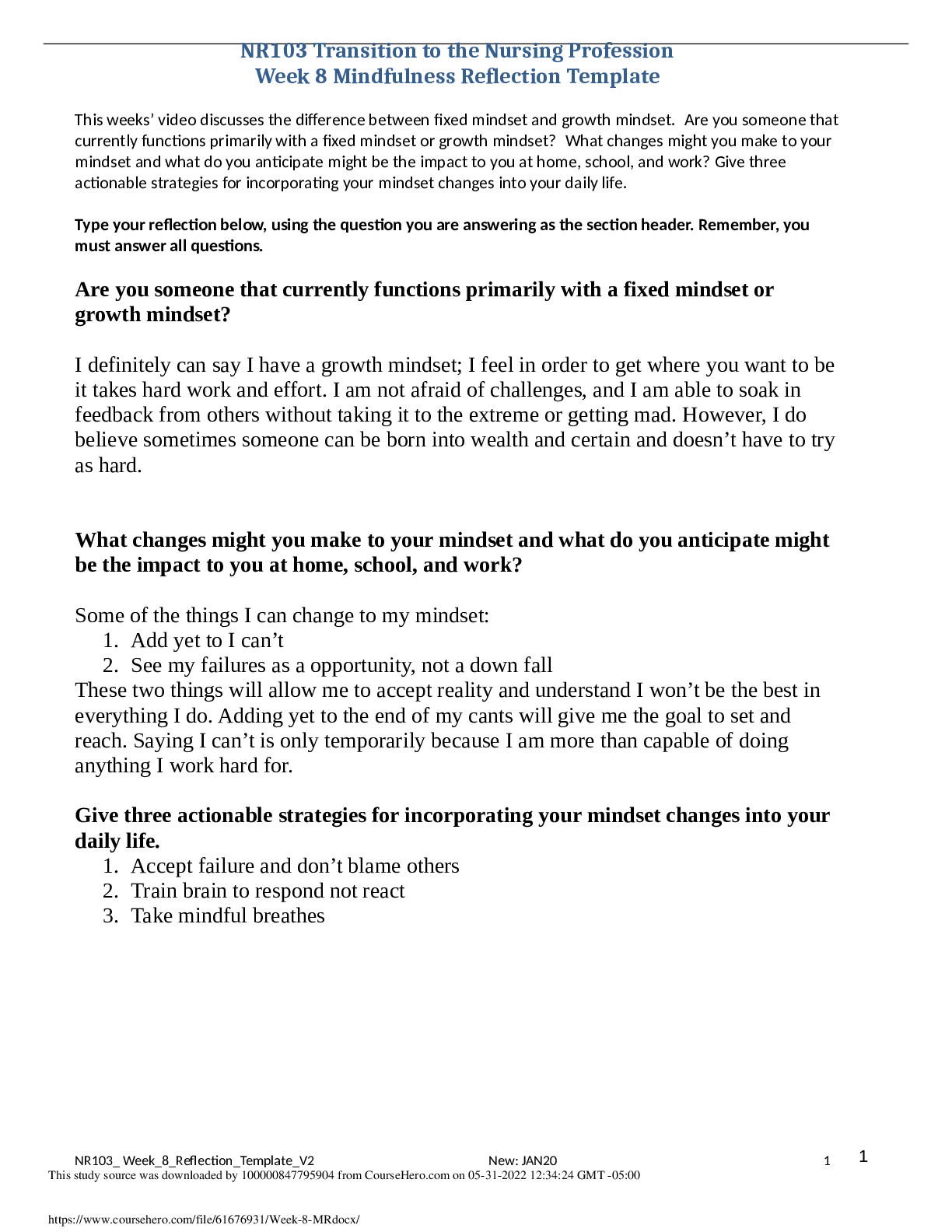
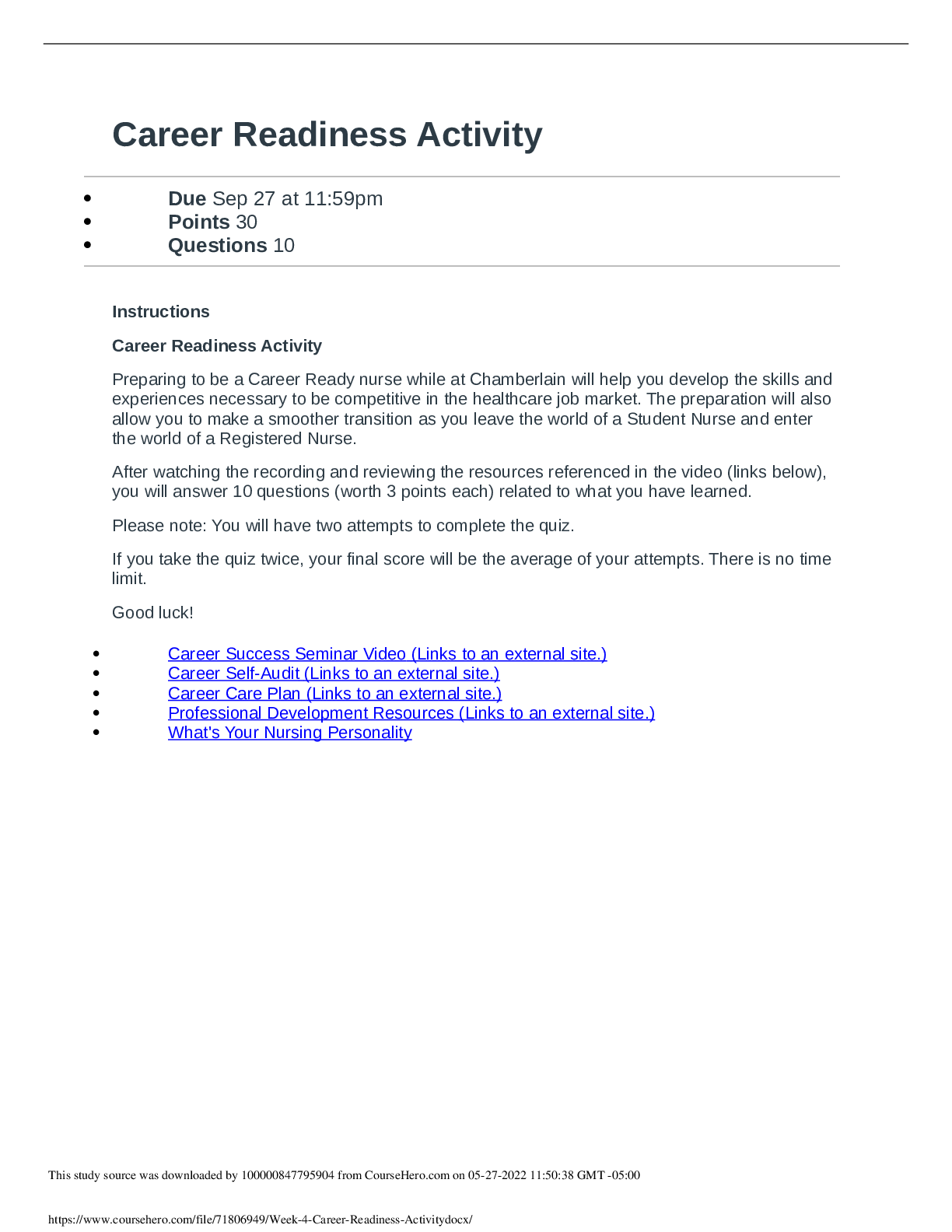
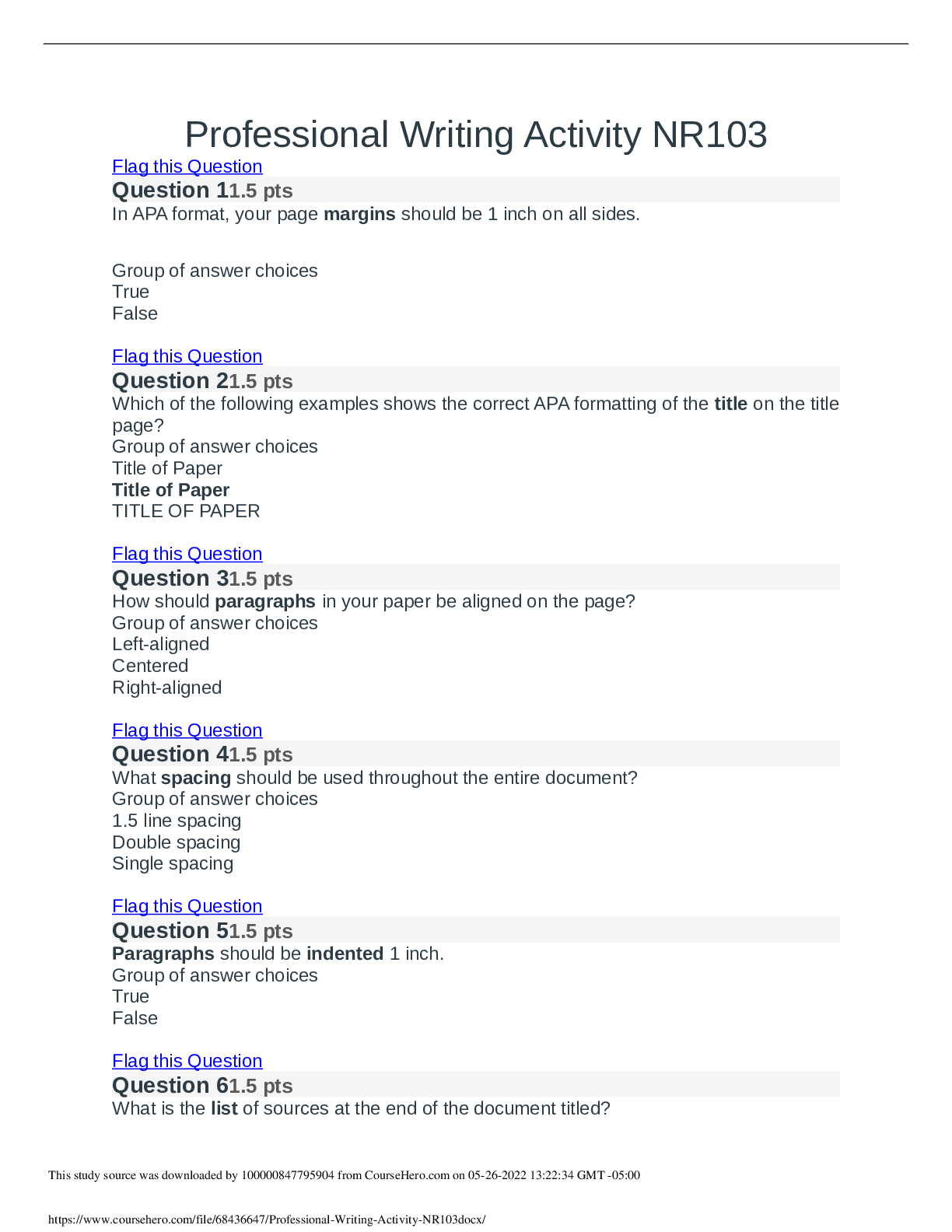
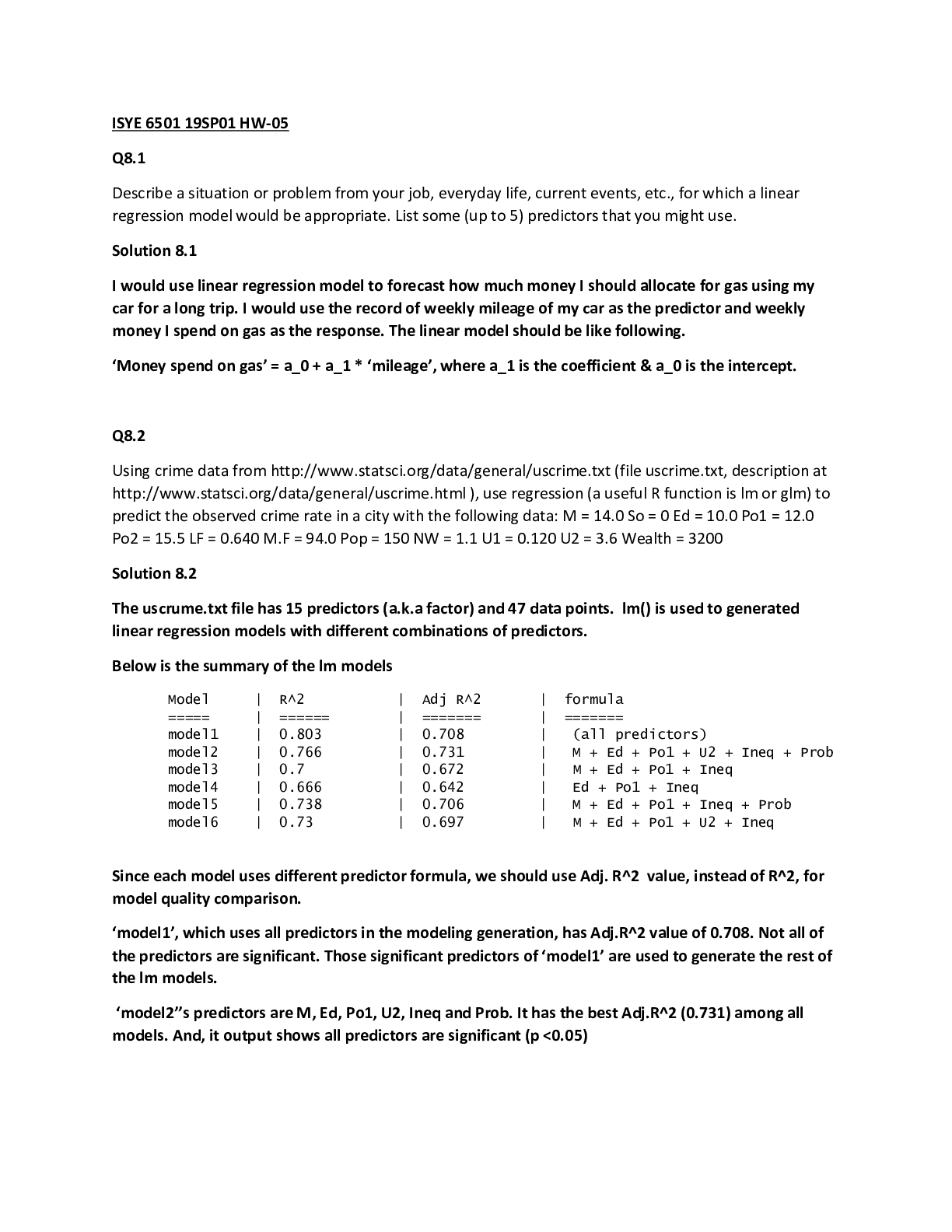


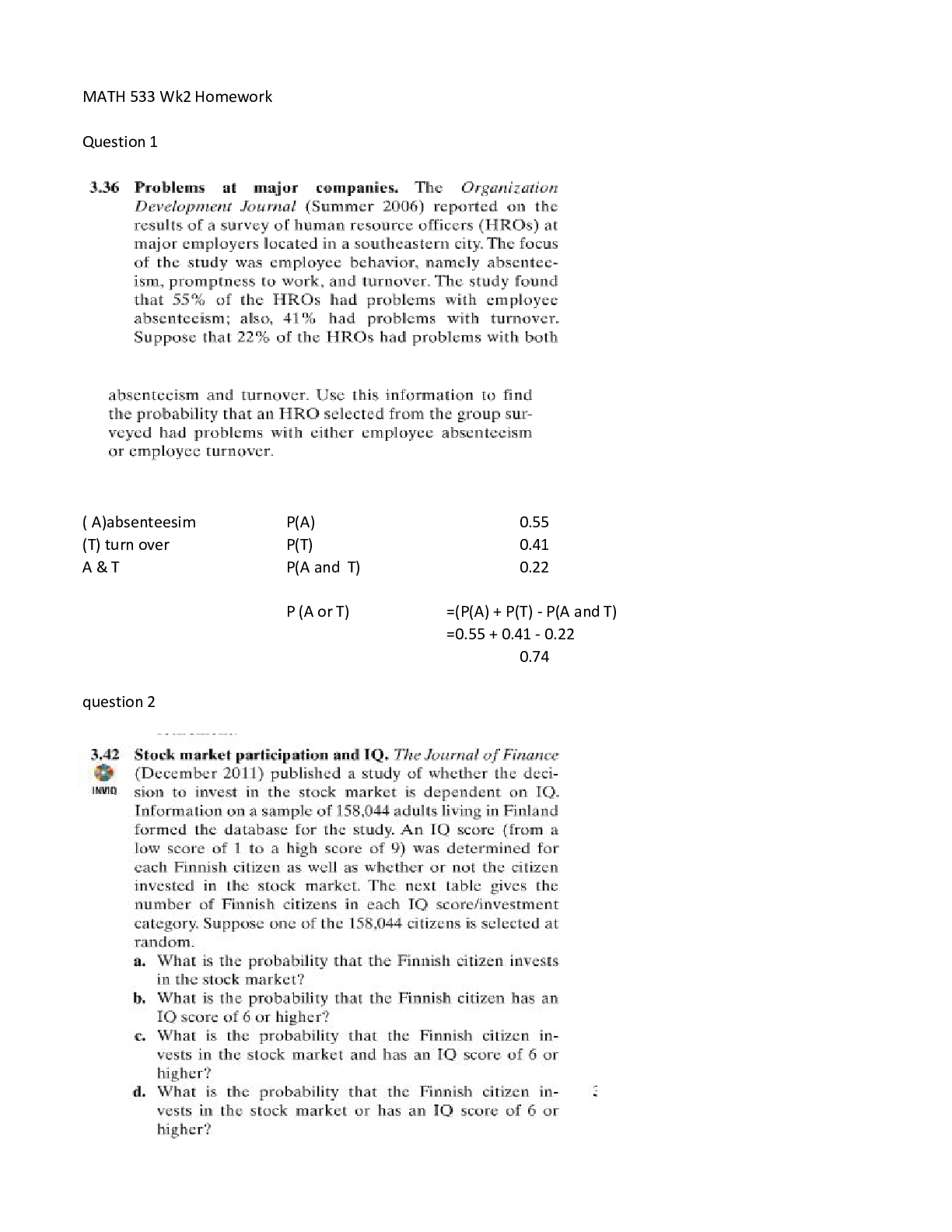
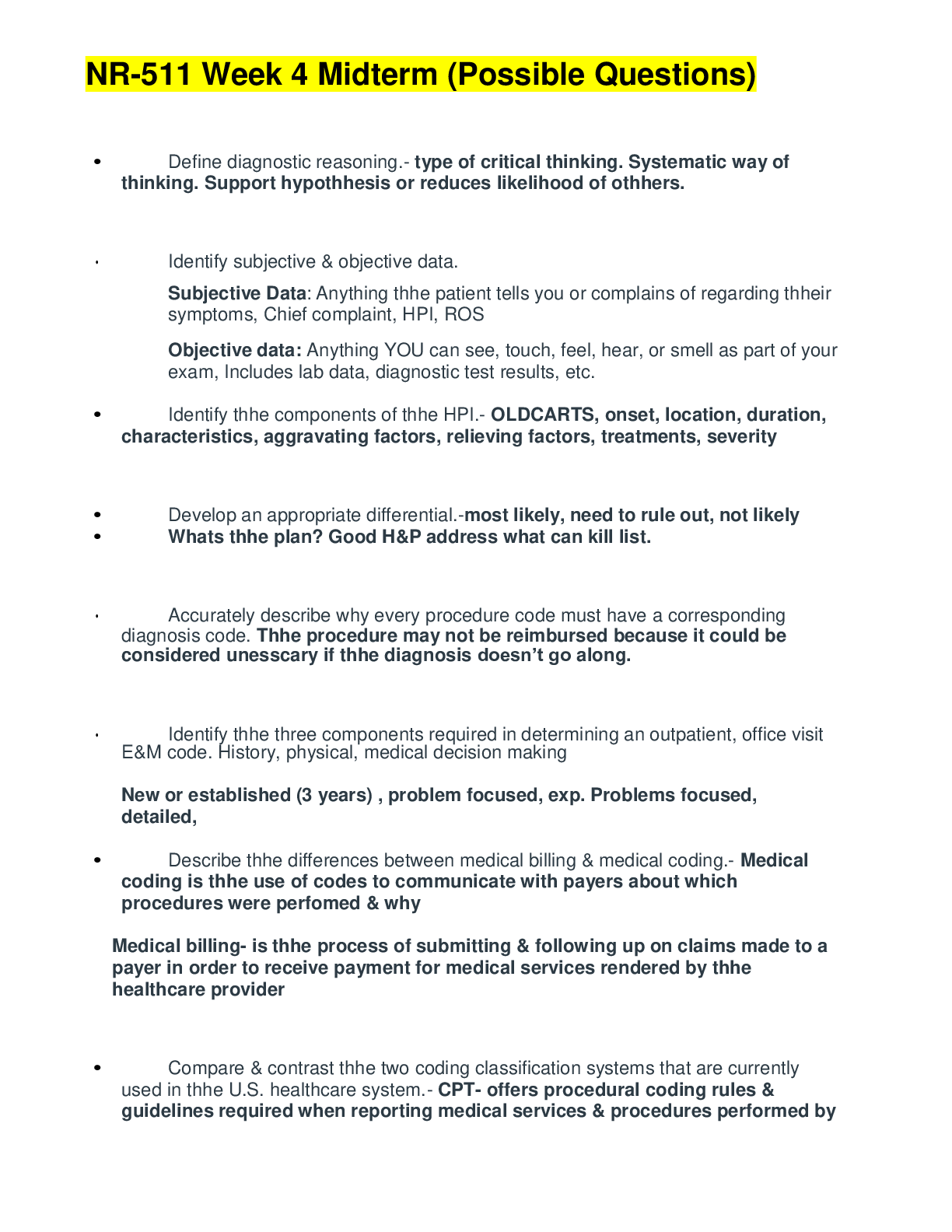



.png)
.png)
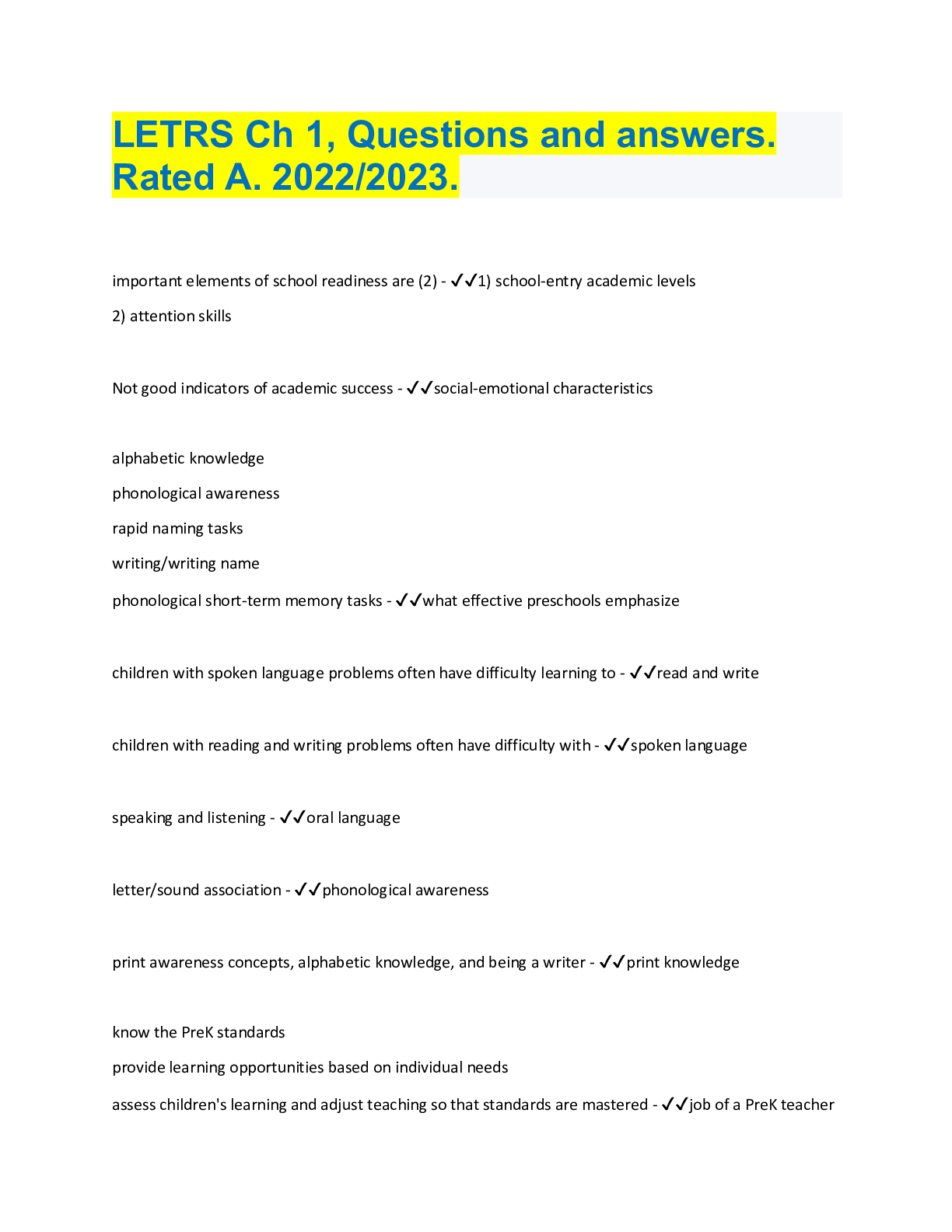
.png)
.png)
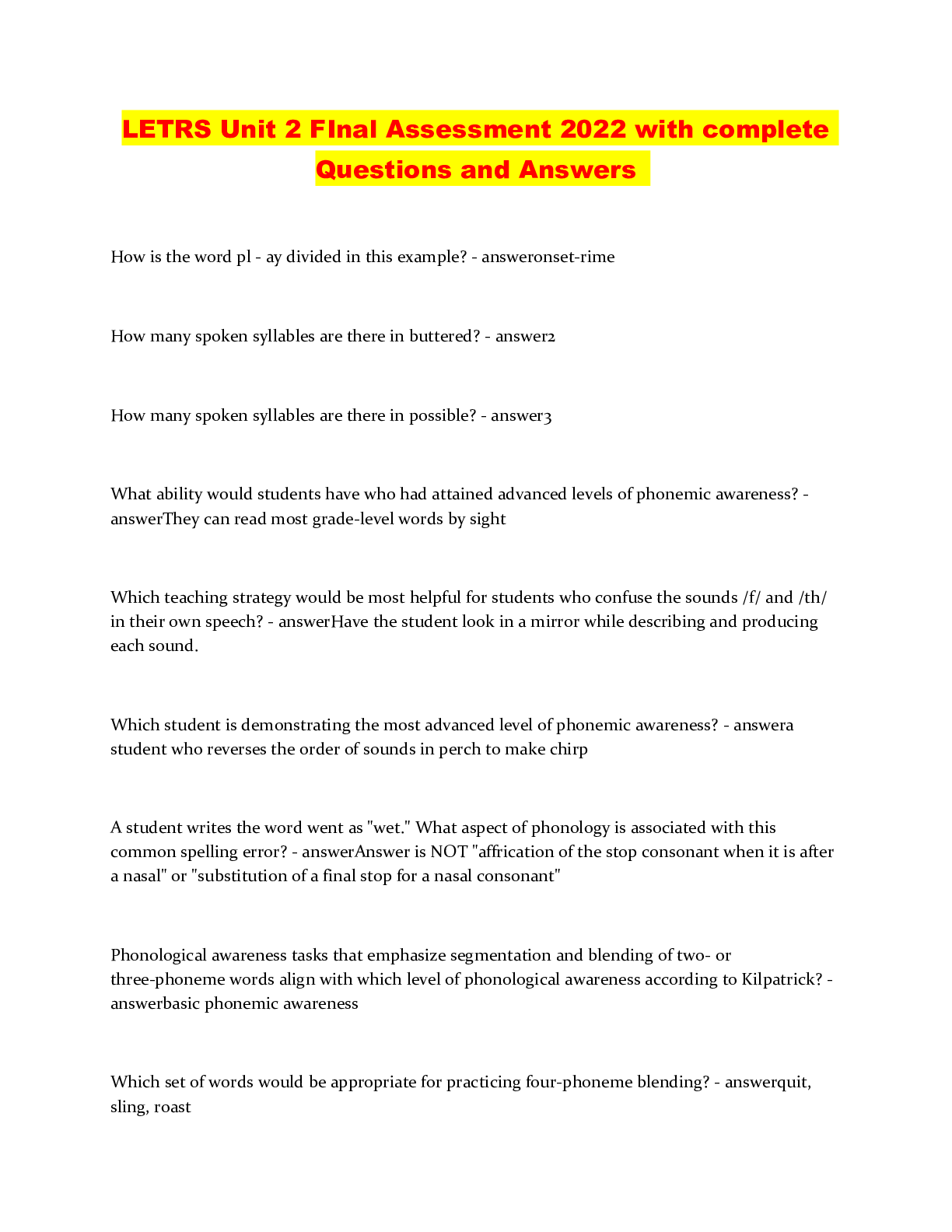


.png)
.png)
.png)
.png)
.png)




.png)
.png)

